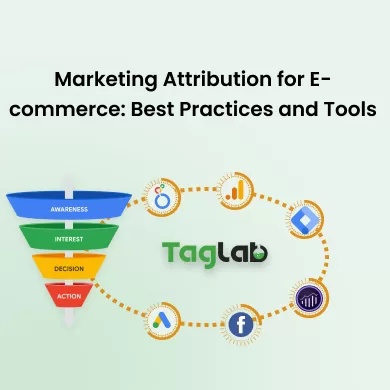Your cart is currently empty!
Conversion Attribution
Posted by:
|
On:
|
Conversion Attribution is the process of identifying and assigning credit to the various marketing channels, campaigns, or touchpoints that contribute to a consumer’s conversion journey. It helps businesses understand the path that leads a customer to take a desired action, such as making a purchase or signing up for a service, and determines which touchpoints should be credited for driving the conversion. Conversion attribution is crucial for optimizing marketing strategies and improving return on investment (ROI).
Detailed Explanation
Conversion Attribution plays a vital role in modern marketing by providing insights into how different marketing activities work together to influence customer behavior. Understanding conversion attribution allows businesses to allocate resources more effectively and refine their marketing efforts. Key aspects of Conversion Attribution include:
- Attribution Models: Various attribution models, such as first-touch, last-touch, linear, time-decay, and data-driven models, are used to assign credit to different touchpoints. Each model offers a unique perspective on how conversions should be attributed to marketing activities.
- Multi-Channel Analysis: Conversion attribution involves analyzing multiple marketing channels, such as social media, email, paid search, and organic search, to understand their collective impact on the customer journey.
- Customer Journey Mapping: Attribution helps map out the entire customer journey, identifying key touchpoints where consumers engage with a brand before converting. This mapping is essential for optimizing the customer experience and increasing conversions.
- Optimization and Budget Allocation: By understanding which channels and campaigns contribute most to conversions, businesses can optimize their marketing strategies and allocate budgets more effectively, focusing on the highest-performing activities.
- Challenges in Attribution: Attribution can be complex due to the involvement of multiple touchpoints across various channels, making it difficult to accurately determine the contribution of each. Additionally, different attribution models can yield different insights, leading to varying interpretations of the data.
To effectively use Conversion Attribution, businesses should choose the right attribution model based on their specific goals, regularly analyze the data, and adjust their marketing strategies accordingly. This approach ensures that marketing efforts are aligned with customer behavior and business objectives.
Key Points
- What it is: The process of identifying and assigning credit to the marketing channels and touchpoints that contribute to a consumer’s conversion journey.
- Why it matters: Conversion Attribution is important because it helps businesses understand the customer journey, optimize marketing strategies, and allocate resources effectively to improve ROI.
- How to use it: Implement conversion attribution by selecting the appropriate attribution model, mapping out the customer journey, analyzing multi-channel data, and optimizing marketing efforts based on the insights gained.
Examples
- Last-Touch Attribution: A retailer uses last-touch attribution to give full credit to the final interaction a customer has with their brand before making a purchase, such as clicking on a Google ad. This model helps the retailer understand the effectiveness of their paid search campaigns in driving conversions.
- Linear Attribution: A software company uses linear attribution to evenly distribute credit across all touchpoints in the customer journey, including social media interactions, email opens, and website visits. This approach helps the company understand the overall impact of their multi-channel marketing efforts.
Related Terms
- Attribution Model
- Customer Journey
- Multi-Touch Attribution
- Return on Investment (ROI)
Frequently Asked Questions
What is Conversion Attribution?
Conversion Attribution is the process of identifying and assigning credit to the marketing channels and touchpoints that contribute to a consumer’s conversion journey, helping businesses understand the path to conversion and optimize their strategies.
Why is Conversion Attribution important?
Conversion Attribution is important because it helps businesses understand the customer journey, optimize marketing strategies, and allocate resources effectively to improve return on investment (ROI).
How do you choose the right attribution model?
To choose the right attribution model, consider your business goals, the complexity of your customer journey, and the channels involved. Experiment with different models, such as first-touch, last-touch, or multi-touch attribution, to determine which provides the most accurate insights for your needs.



